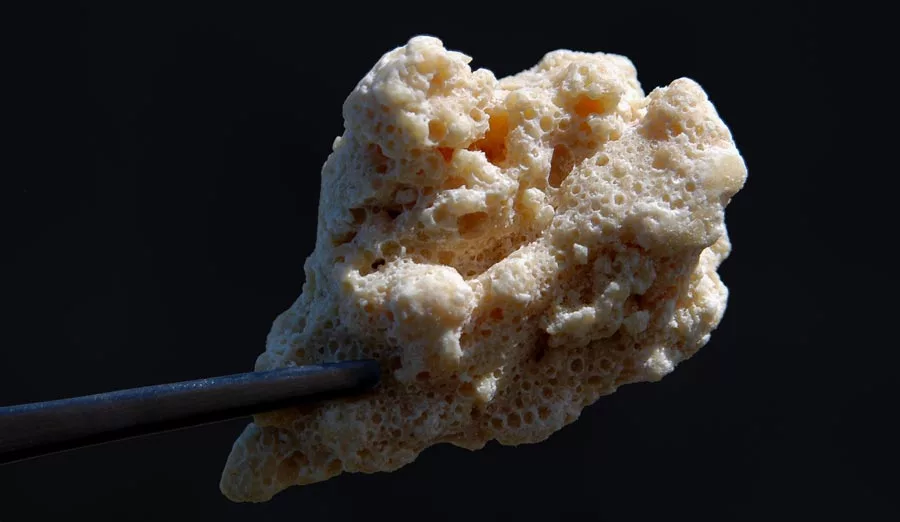Cocaine is a dangerous drug that has caused untold damage to lives and families worldwide. For a long time. Cocaine was the purview of the rich and famous, but in the mid-80s, something changed for the worse. A new version of cocaine came onto the scene. Nicknamed crack, this version of the drug was cheaper and easier to produce.
It was also a lot more dangerous and just as addictive as the original product. Thanks to quick and efficient drug trafficking, cartels were able to dominate low-income neighborhoods with cheap crack, leading to a massive decline in fortunes among the economically depressed parts of the country. Today, crack has been the cause of severe destruction of low-income neighborhoods.
An Overview of Cocaine and Crack
At their core, crack and cocaine are the same substance, albeit made in different ways. Cocaine is manufactured into a powdered form, but when it’s processed into crack, it presents as a rock-like substance. Crack cocaine sees the raw coke powder combined with water and another substance (commonly baking soda) to solidify the powder into a hard stone. The term “crack” stems from the sound the rock makes when heated while being smoked. The effects of crack and cocaine on the body are also similar since they are both stimulants.
How Are Crack and Cocaine Similar?
Crack and cocaine are the same substance essentially. These drugs create a reaction in the body that speeds up metabolic processes. When a person takes either crack or cocaine, it immediately releases dopamine to the brain. Dopamine is the substance the body uses as a reward for doing something positive. However, this dopamine rush is far in excess of what the body is used to handling. After the dopamine high dissipates, it leads to a depression that could spiral into dangerous thoughts. Because the depression is so deep and sudden, people who use either form of cocaine are tempted to keep using it to avoid that depressive episode. People who use either crack or cocaine are at risk of severe ailments, including hallucinations, seizures, arrhythmia, stroke, and sudden cardiac arrest.
Physical Differences Between Crack and Cocaine
Cocaine is a powdered drug that can be snorted or diluted, and injected into the bloodstream. On the other hand, Crack is a rock that is usually heated within a pipe to be smoked. Crack is generally cheaper to buy than cocaine. Crack is a relatively new drug, showing up around the 80s. Cocaine and its precursor, the coca plant, were well known and used in even pre-Columbian times in South and Central America. Crack also carries harsher penalties for having and using it than cocaine does. Crack acts a lot faster than cocaine, allowing a person to get high in a fraction of the time they need with cocaine. Additionally, crack can be considered far more addictive than cocaine, with addiction sometimes setting in after the first use of the substance.
Is Crack More Addictive Than Powdered Cocaine?

Cocaine is a highly addictive substance, and it has historically caused thousands of deaths thanks to overdosing on the substance. However, as addictive as cocaine is, crack may be even more addictive than its counterpart. This addictiveness stems from how crack enters the bloodstream and how fast it interacts with the brain.
A massive high sets in rapidly when a person smokes crack but fades just as quickly. The short, pleasurable nature of the high forces people to want more of the substance to sustain it and avoid the eventual depression. Dependency on a substance sets in when the brain rewires itself to handle the drug’s presence. In this case, this rewiring happens rapidly, sometimes after the first use. Conversely, cocaine may take a little longer to act.
The Cost Differences Between Crack and Cocaine
One of the most compelling reasons for people to use crack is how cheap it is compared to cocaine. Powdered cocaine found popularity among the upper class of the US in the 70s and 80s. The drug became a status symbol, as those who could avoid it spent tons of money on the substance. Its illegality raised the price and made it impossible for those without the economic means to afford the drug.
In the 80s, this changed when crack was first produced. This version of the drug combined cocaine with low-cost baking soda and water to make an even more potent drug that could be mass-manufactured without costing the makers much in terms of time or money. A single kilo of cocaine could make four kilos of crack. The cost of a crack rock was much more affordable to those of lower economic means. Now, even the economically depressed could experience cocaine, which led to an addiction epidemic that still plagues those areas today.
Can You Overdose from Cocaine and Crack?
Cocaine and crack build tolerance within the brain. When someone takes a drug, their brain changes to deal with it. In the case of crack and cocaine, the brain ramps up its ability to respond to dopamine. This change in the brain chemistry means that the user needs more of the substance the second time around to get the same feeling out of the process.
Unfortunately, the obvious side effect of this change is that the person may inadvertently consume more of the substance than is safe. Overdosing from crack or cocaine happens, even in the most meticulous users. Since many users consume the drug in isolated circumstances, no one can know when an overdose happens fast enough to get them the help they need. Most individuals who overdose on these substances die as a result.
Other Risks and Side Effects Of Cocaine And Crack
In addition to overdosing, there are other pressing side effects of crack and cocaine. One of the most apparent, especially in low-income neighborhoods, is the loss of economic freedom. Crack isn’t expensive, but maintaining the habit requires spending a lot of time and money on the drug. If the police arrest a user, they may face jail time and lose their job.
This loss of economic freedom has a knock-on effect of increasing crime in neighborhoods with rampant crack usage. When a person takes crack or cocaine, they will also likely experience several other side effects, including:
- Mood disorders
- Headaches
- Decreased appetite
- Paranoia
- Hypersensitivity
A person who uses crack generally smokes it, leading to lung problems and respiratory issues. Cocaine, if snorted, can lead to nosebleeds. If injected, using dirty needles can lead to hepatitis and, on occasion, AIDS.

Can You Get Withdrawals from Snorting Coke?
If you snort coke, it counts as consuming the drug. As with all other drugs, snorting or consuming it in different ways can lead to dependence on the substance. If a person becomes dependent on the substance, then withdrawals can happen as a result. Smoking crack can also lead to withdrawals if someone becomes dependent on the substance. The withdrawal process can take time and may have various side effects, including:
- Poor cognitive function
- Irritability
- Agitation
- Drowsiness
- Apathy
- Insomnia
- Intense drug cravings
The symptoms start within the first day of the person not using the substance, but they increase in intensity. Withdrawal is the first step of recovering from a dependence on the substance. The side effects are the body’s way of convincing the person to keep using the substance. Detox is a form of controlled withdrawal.
Many facilities offer medically supervised detox since symptoms can become extreme in rare cases. It’s better to be prepared than to do it and hope for the best. Best Rehabs In Arizona Recovery has a dedicated team to help with crack and cocaine detox, ensuring that patients get the best care possible.
Finding Treatment for Cocaine in Any Form
Detox is the first step in overcoming crack and cocaine addiction, but it’s not the only thing that needs to be done. While detox will help a person break their physical dependence on the substance, a significant portion of a person’s mind is still stuck on using it.
Therapeutic methods such as Cognitive Behavioral Therapy (CBT) can help individuals struggling to recover from the drug’s psychological hold on their bodies. Therapy can happen in either inpatient or outpatient settings, although a particular type of treatment might appeal to a person more than the other because of how they are delivered.
Residential Treatment for Cocaine and Crack
Inpatient treatment centers focus on helping people overcome their addiction by reducing the number of distractions around them. Inpatient facilities also limit visits from family and friends and keep the facility free of all drugs at all times. The downside of checking into an inpatient facility is that it is expensive and requires the person to put their life on hold for a bit. The expense has become less of an issue as many inpatient facilities now offer payment plans or take insurance for client stays.
Outpatient facilities are cheaper but require a much bigger commitment from the client. A person could theoretically continue their job and life uninterrupted at outpatient therapy once they meet their scheduled appointments at the rehab center. Outpatient treatment is less intrusive, but it also opens up a person to more temptation from the drug.
Long Term Recovery from Cocaine Is Possible
Cocaine and crack can cause massive problems to a person, but there are ways to deal with this issue. Long-term recovery at a rehab center like Best Rehabs In Arizona Recovery focuses on both the physical and mental aspects of addiction.
Our trained staff can develop individual plans that appeal to each patient’s needs. Through CBT and other proven scientific methods, we help patients overcome their dependence on a substance so they can see a brighter future. Contact us today to experience a different kind of recovery – one that’s focused on you.

